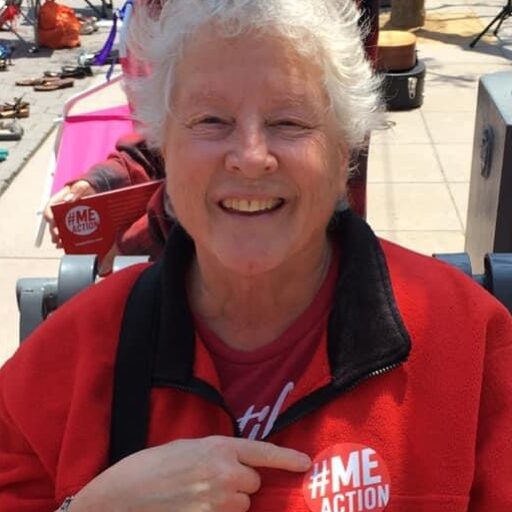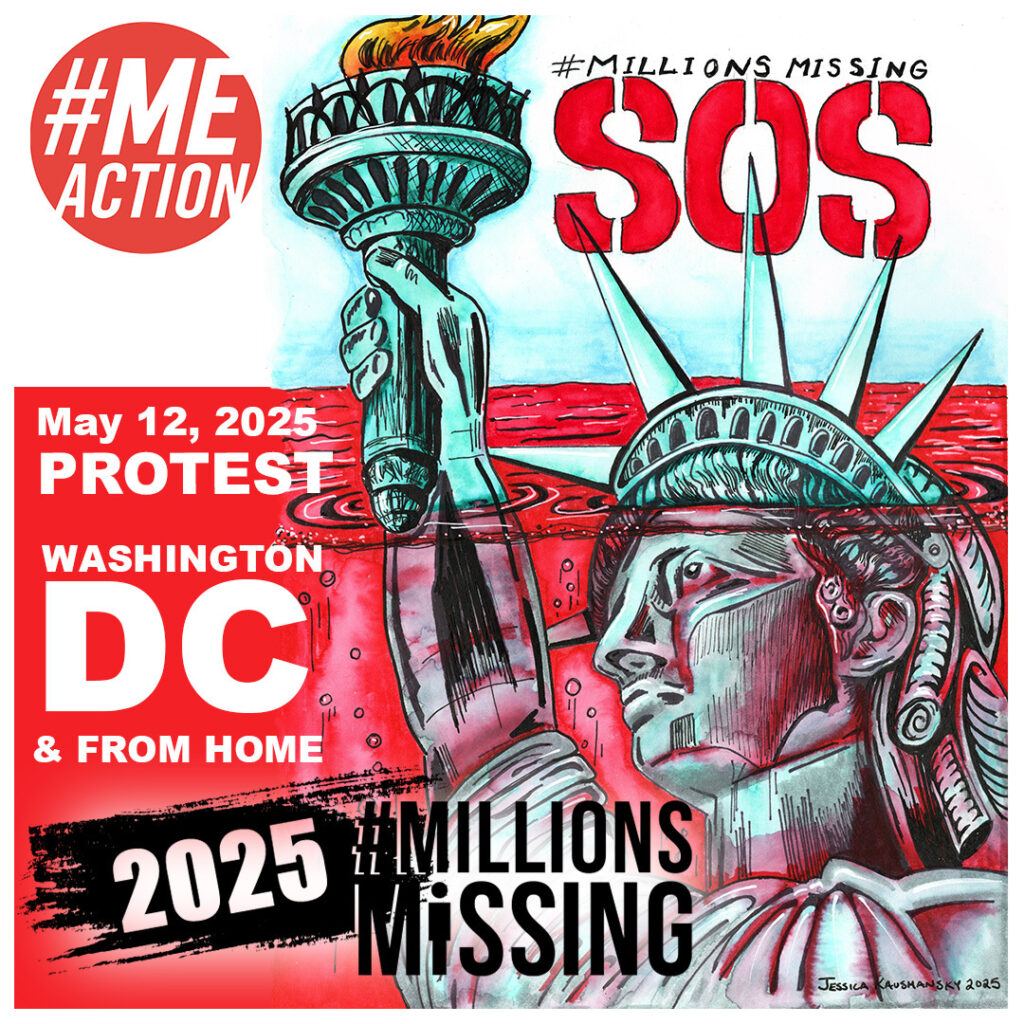
Join our protest against cuts to Medicare and Medicaid!
WELCOME everyone with ME/CFS, Long COVID, or any other chronic illness and those who care for them. I understand only too well the discrimination and harassment by those who do not believe the devastating reality of our illnesses. Researchers are working urgently to identify physical causes for our illnesses so that one day there will be treatments and even a cure.
At least I can share tips that I’ve learned having severe ME/CFS on and off since 1974. My hope is that I can make your chronic illness journey easier, and help you find a community of support.
Today I’m in the beginning stages of writing a self-help workbook for surviving chronic illness. The book will be written by me, a person with brain fog, for other people with brain fog. Short chapters and easy questions can help you think about your priorities, your relationships, what you eat, and more. Since everyone’s symptoms are different, this workbook can help you find solutions for your personalized needs. Publication date: someday!
REPUTABLE LINKS:
- MEAction
- Solve ME/CFS
- Massachusetts ME/CFS
- Bateman Horne Center
- Open Medicine Foundation
- Myalgic Encephalomyelitis International
- Invisible Disabilities Association
- Chronic Market
INFECTION-ASSOCIATED CHRONIC CONDITIONS INITIATIVE
Coordinating ME/CFS with organizations that support Long COVID and other similar conditions.
Working together, we can push for medical research and treatments for our overlapping symptoms.
”A rising tide lifts all boats” is my hope.
WHAT CAN I DO DESPITE SEVERE ME/CFS?
In 2019, my severe ME/CFS symptoms forced me to retire from twenty years managing the public website and critical computer systems for a department of Los Angeles County. This was my fourth episode of ME/CFS since 1974. Between these episodes, I was very active, completing my college degree, working full-time, taking career and art classes after work, traveling, crewing for sailboat races, and experimenting with new techniques in quilting.
Before retirement, I was a successful and respected member of my department’s Information Technology team for twenty years. After retirement, I felt as if I’d fallen off a cliff into oblivion. Who was I now that I had no career label?
Choosing a new identity for myself required finding something I could still do despite my symptoms. I didn’t want to talk endlessly about my health, as that was too negative. I wanted to find a more positive focus so that I could still have a reason to go on. Of course, quilting would continue to be part of my life. Looking back, I’d always wanted to be a writer, and I’d taken classes in the past. So, I reinvented myself.
Even with my limited brain function, writing for a few minutes a day is making my dream of being a published writer come true. I’ve learned to have a reasonable expectation that several days a week I will write for 20 minutes once a day. That’s good enough progress for me.
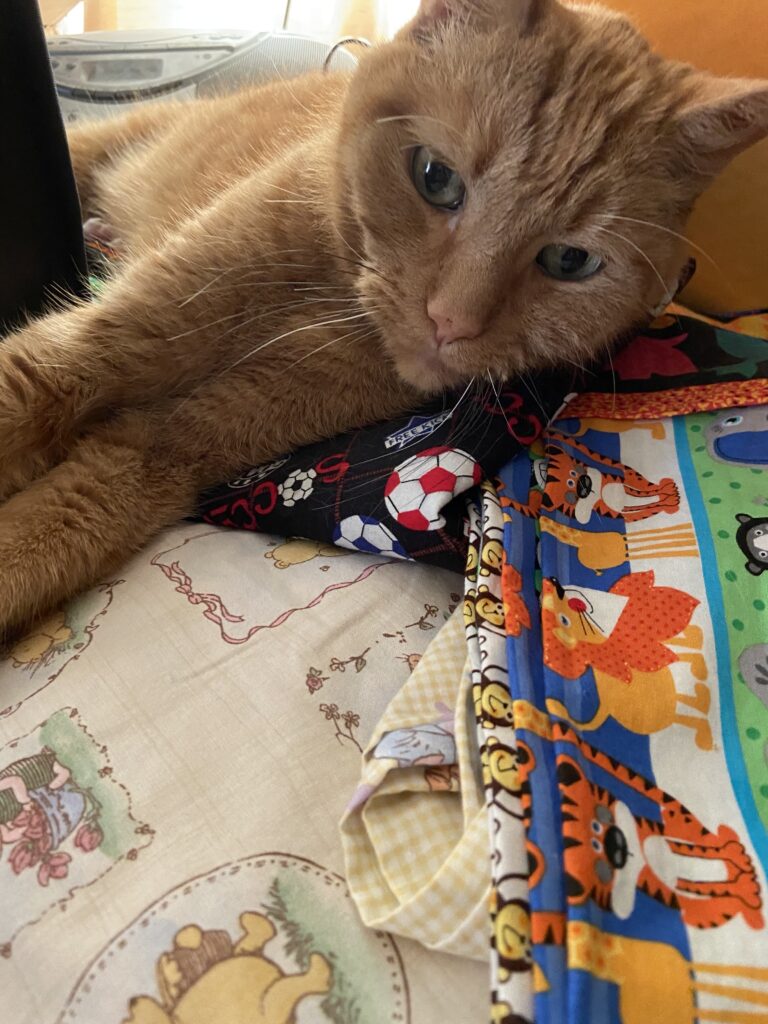
Watch me share my writing and my quilt (from 2021.)
PUBLICATIONS

My first short mystery story “Ruby Red” will be published in the anthology from the Desert Sleuths chapter of Sisters in Crime in September 2025.
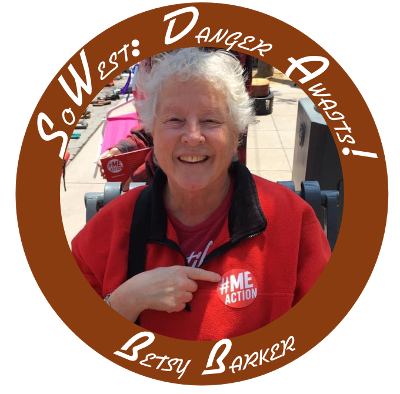
My writing focuses on surviving disability and chronic illness.
My sleuth is a woman with ME/CFS who solves the crime.
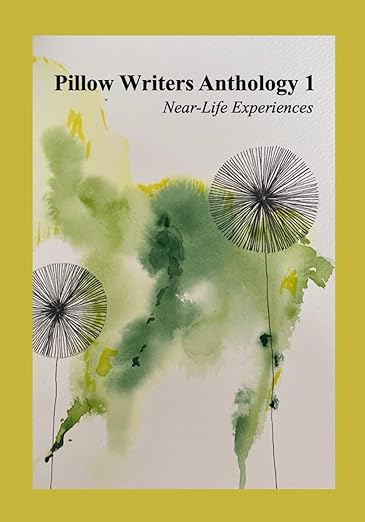
Joining the Pillow Writers gave me both a support group for ME/CFS and for my dream of becoming a writer.
This is the first publication from the group and includes my very first published short story.
My story was inspired by bald eagles I saw on my quilting cruise to Alaska and my concern for the environment. My trip was during a remission when I was able to work full-time for the County.
Profits from book sales benefit MEAction.
Pillow Writers Anthology Volume 1 announcement from MEAction.

My quilt is a memoir of my experiences during the COVID pandemic.
No meeting with friends,
No open beaches,
No vacation travel.
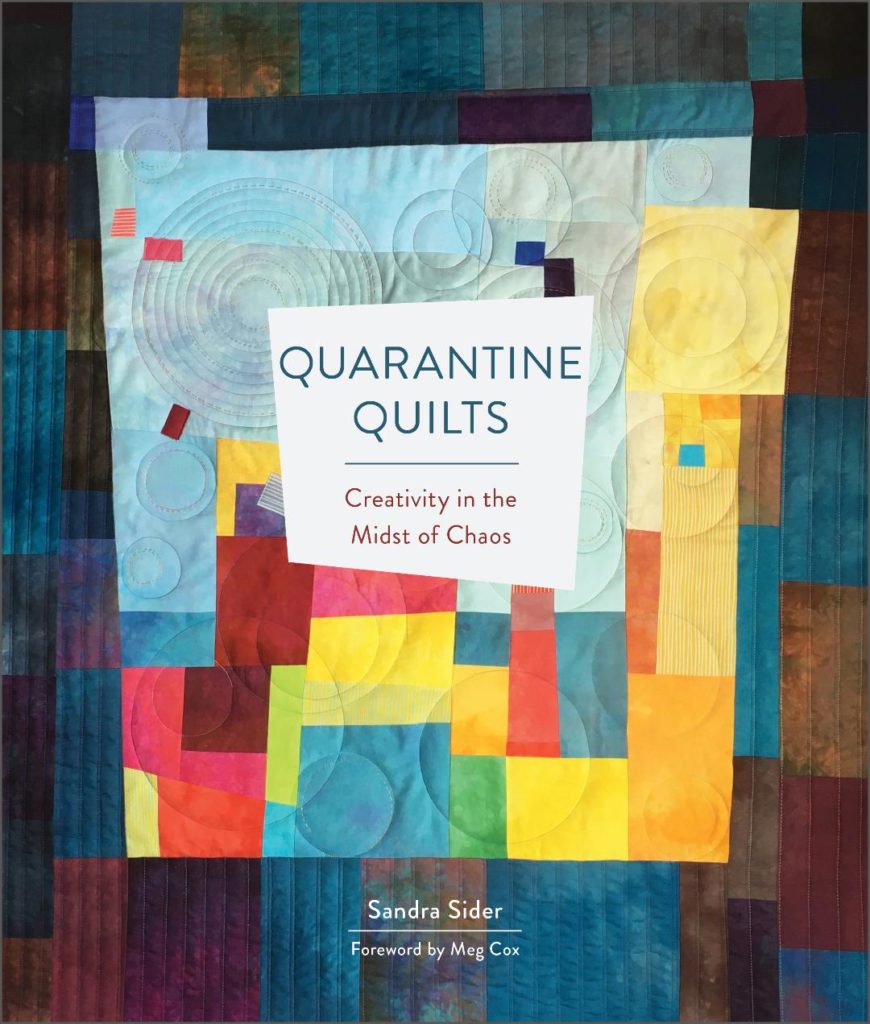
“Corona Virus Blues” was published in this book edited by Sandra Sider and Meg Cox, who are “SEWLEBRITIES.”
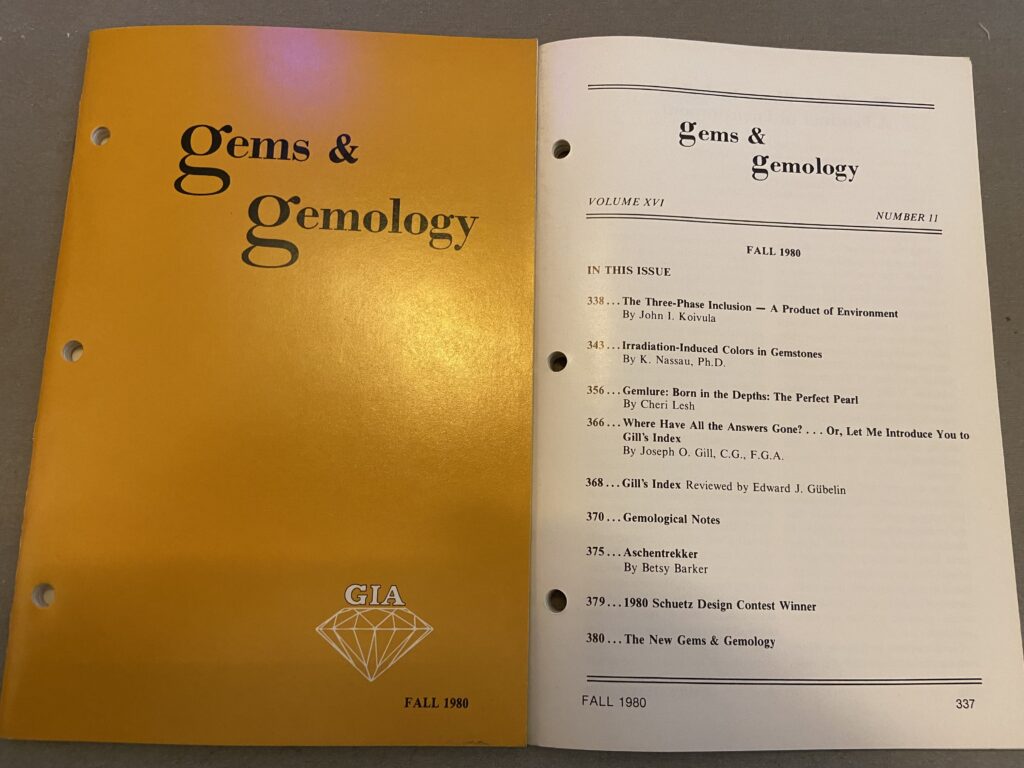
My first two publications are from my years working at the Gemological Institute of America. GIA is the premier school for the global jewelry industry.
Graduating from the GIA’s Graduate Gemologist program gave me experience grading diamonds and identifying colored gems.
My first job at the GIA was teaching several thousand correspondence students how to grade diamonds.
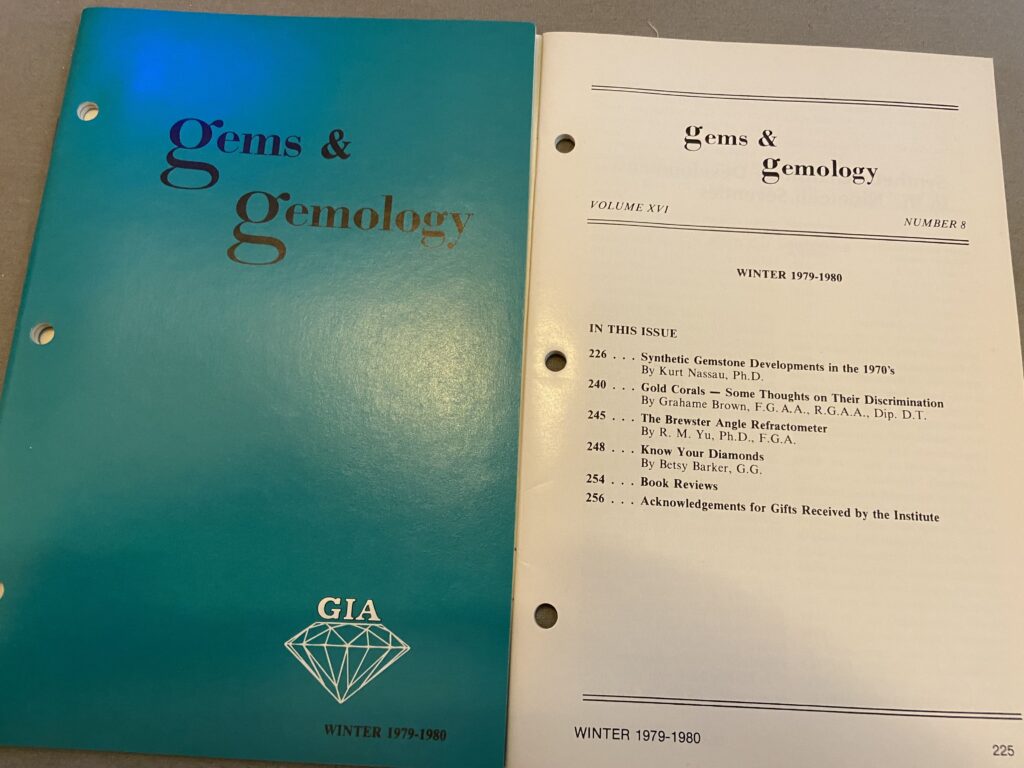
Gems and jewelry still fascinate me. Take time to enjoy the fabulous gems on Jewelry TV.
Check out Jewel School on Facebook, YouTube, and cable tv to learn how to make your own jewelry.
WRITING ORGANIZATIONS
My daily schedule revolves around watching Zoom writing webinars from the organizations listed below. Chatting in webinars makes me feel like I’m part of a community. Most of these webinars are recorded for playback later, as I often fall asleep or miss important points.
Each organization has an annual membership fee which includes many free Zoom webinars, support from local chapters, and access to resources about how to write. Joining is a bargain!
Each genre has expectations that you need to learn, so these groups and classes can save you from writing that won’t sell. Being among other writers will also inspire you to keep writing as well as help you answer writing questions.
- Sisters in Crime (Mystery Writers, all are welcome)
- Romance Writers of America
- Contemporary Romance Writers
- National Association of Memoir Writers
- Nonfiction Authors Association
- Society of Children’s Book Writers and Illustrators
- Children’s Book Mastery
QUILTING
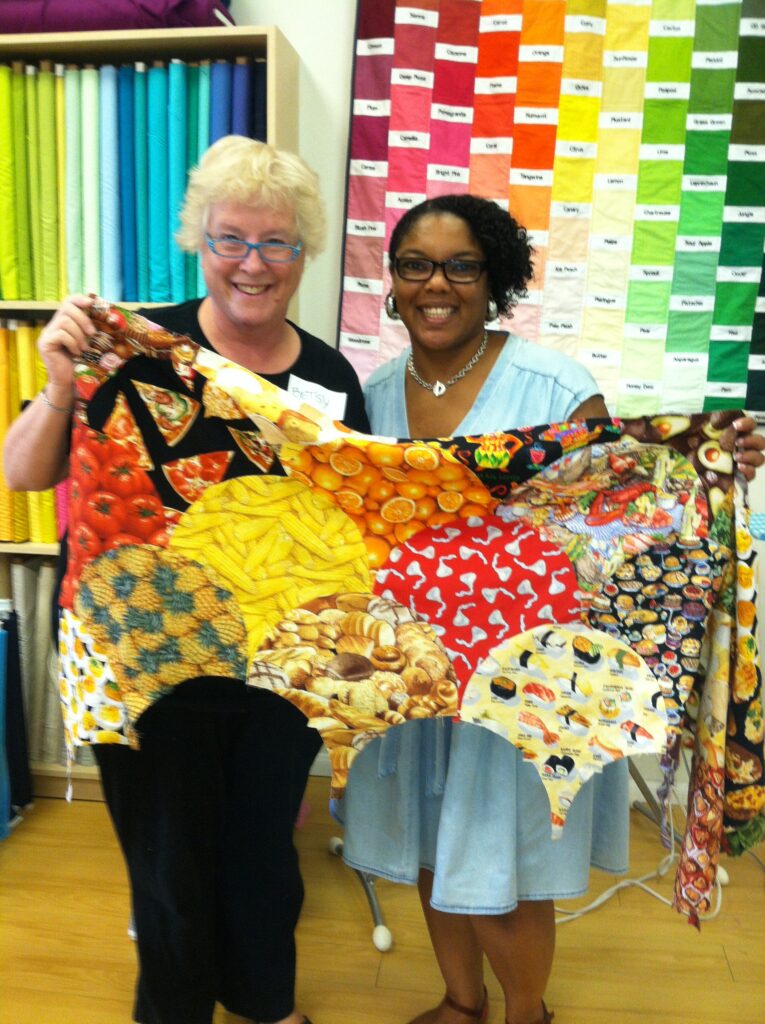
During my third ME/CFS episode in 1985, I found quilting, and it’s been my passion ever since. I quilt to express my unique creative voice and to enjoy the friendly global community of quilters. Quilting brings me joy, meditation, and peace.
Sitting up is very draining for me, so I can only quilt for one hour or less in a day. Some days I can only watch quilting videos.
Here is Latifah Saafir teaching me her Glam Clam pattern. Latifah is a founder of the Modern Quilt Guild.
Can you see that the fabrics have a food theme?
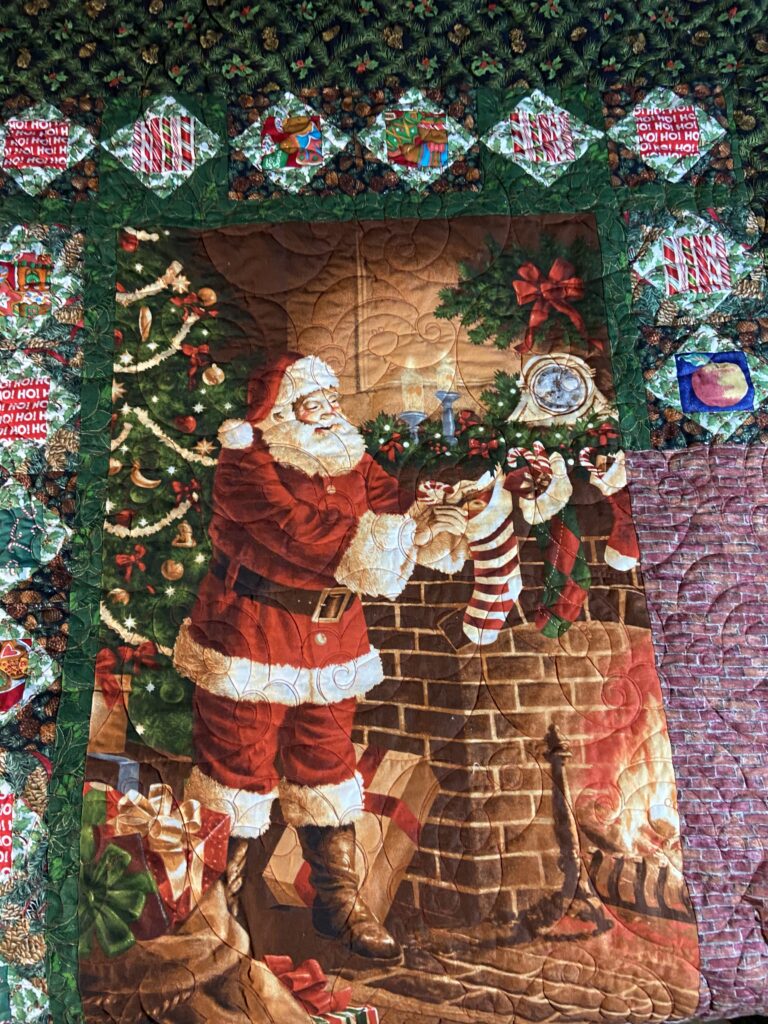
Santa Claus filling stockings at the fireplace is one of the many quilts I have sewn and donated to charity over the years. Santa is on a cloth panel, and the blocks around the edge are the very easy economy block.
In the past, I have donated quilts to the Ukrainian refugees and to a women’s shelter.
My quilts are like sending a fabric hug to someone who is suffering. They can wrap up in my quilt and be comforted.
YOU CAN QUILT TOO!
- Missouri Star Quilting videos FREE
- Fresh Quilting Modern videos FREE
- The Quilt Show YouTube videos FREE
- The Quilt Show videos (subscription, new videos every other week)
- Quilting Daily videos (subscription, includes Fons and Porter’s)
- Quilt Alliance
PROTECTING THE OCEAN

Walking on the beach near my home in Los Angeles, I collided with a baby leopard shark in shallow water. As I watched the shark disappear into deeper water, I was inspired to learn more.
The Monterey Bay Aquarium offers facts about sharks, as well as live webcams that are windows into the underwater world.
Watch Sharks Unknown to learn facts about sharks. The series is hosted by Jasmin Graham, noted shark scientist and founder of MISS (Minorities in Shark Science).

The Ocean Cleanup Project works to remove plastic trash from waters around the globe.
Interceptor 007 cleaning trash in Ballona Creek. The main channel of Marina del Rey harbor is to the left, with Los Angeles International Airport beyond the beach to the right.
ARM CHAIR TRAVEL
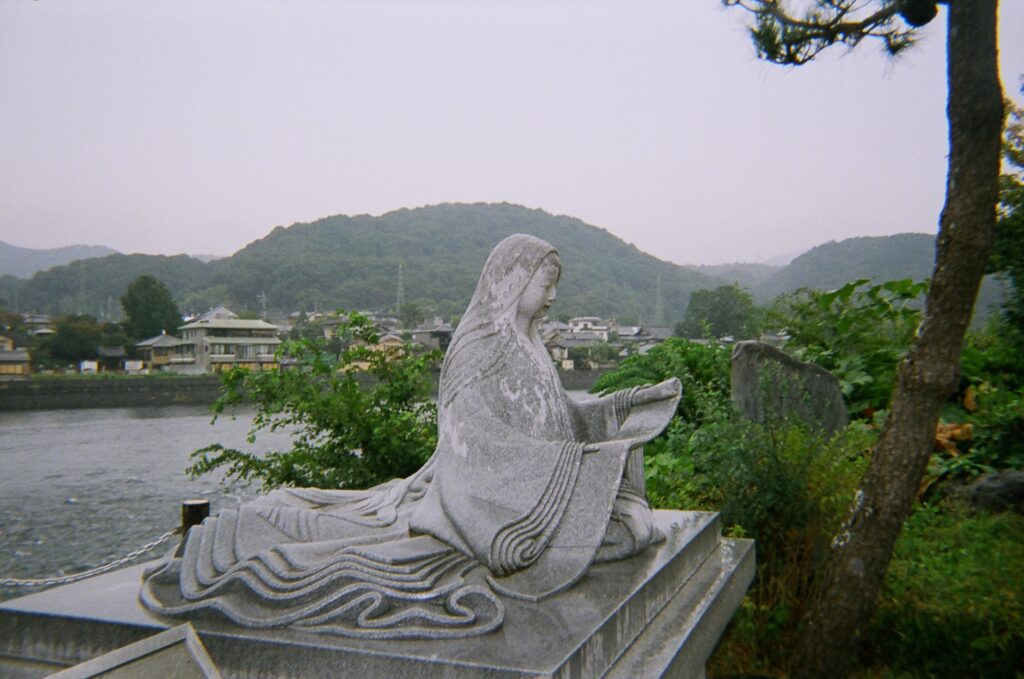
When I was healthy enough to work, I took a group tour every year. I miss exploring the world in person, so now I travel from my pillow.
Lady Murakami, author of the first Japanese novel, The Tale of Genji. ( Photo from 2006)
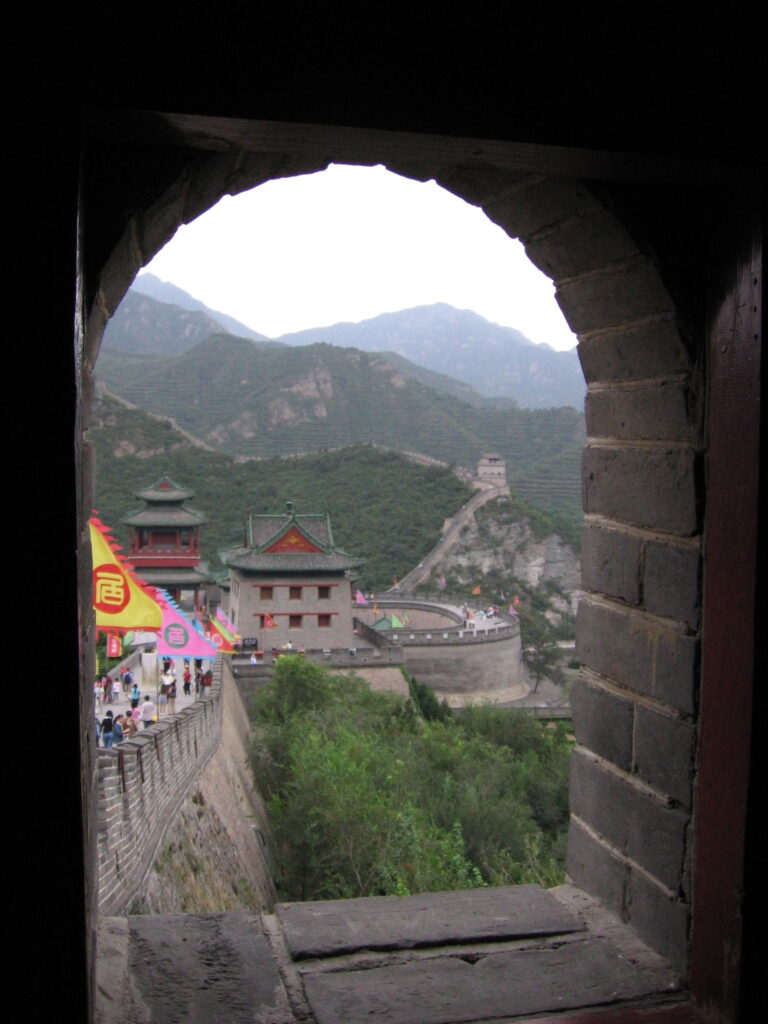
The Great Wall of China from inside a guard station. (Photo from 2005)
My great-grandmother traveled in China and Japan in 1903-1905. Her travel diary was the source for my college senior thesis. Her memoir has given me a fascination of Asia that continues to this day. Watch the latest news from Asia on NHK news.
Virtual travel:
Samantha Brown
Pati Jinich
Lucky Chow
Joseph Rosendo
WATCHING SAILBOAT RACING

Maiden’s all-female crew wins the Ocean Globe Race, April 2024.
Maiden raises funds to educate girls around the world.
In junior high, my family bought a 30 foot sailboat. We spent every weekend and vacation sailing on San Francisco Bay for many years. I was also part of a women’s sailboat racing team and several winning race crews in Marina del Rey, California.

Latest racing results from Planet Sail.
Women’s America’s Cup team raced in Barcelona, Spain in October, 2024.
Even though I haven’t raced since 1983, I can still enjoy the competition.
CAREER HISTORY
- Los Angeles County Department of Beaches and Harbors:
Managed Department’s website including bilingual pages for our diverse customers; Monitored VOIP phones and multi-million dollar contract; Maintained online reservations systems; wrote user manuals for purchased software; provided technical support for networks and equipment - GTE Data Systems (now renamed):
COBOL programming for budget system for GTE California telephone company; maintaining positive working relationships with user team during extensive testing - Gemological Institute of America:
Completed Graduate Gemologist diploma; taught diamond grading to over 1,000 adult correspondence students; Called a “walking encyclopedia” as reference librarian; diamond grader
EDUCATION
- Santa Monica College:
Geographic Information Systems (ESRI), COBOL, Studio Art and Art History - UCLA Extension:
Certificates for Web Development and Networking, Writing and Photography classes - Westside Center for Independent Living (now Disability Community Resource Center:)
Computer Training Program for People with Disabilities (program closed) - Scripps College, Claremont CA: B. A. degree in Asian Studies
- Stanford University, Palo Alto CA: Summer Program: Cinema, Studio Art
- Foothill Junior College, Los Altos CA: Summer Program: Mandarin Chinese
- Castilleja School, Palo Alto CA: College Preparatory High School Diploma
CONTACT ME
